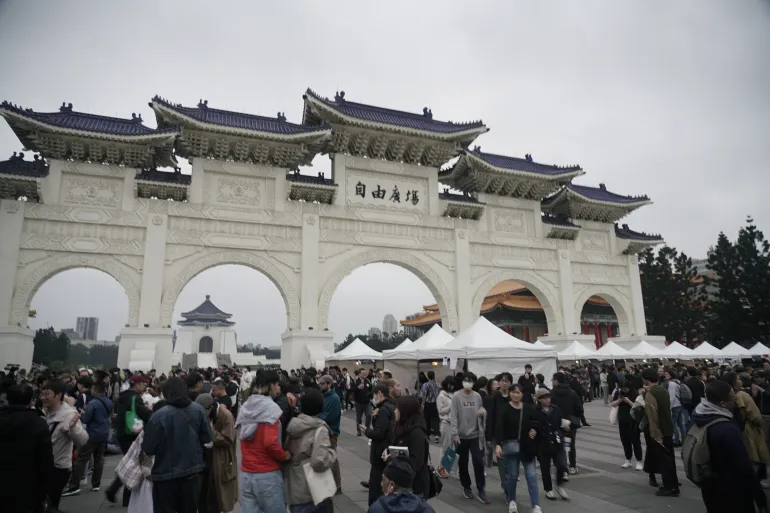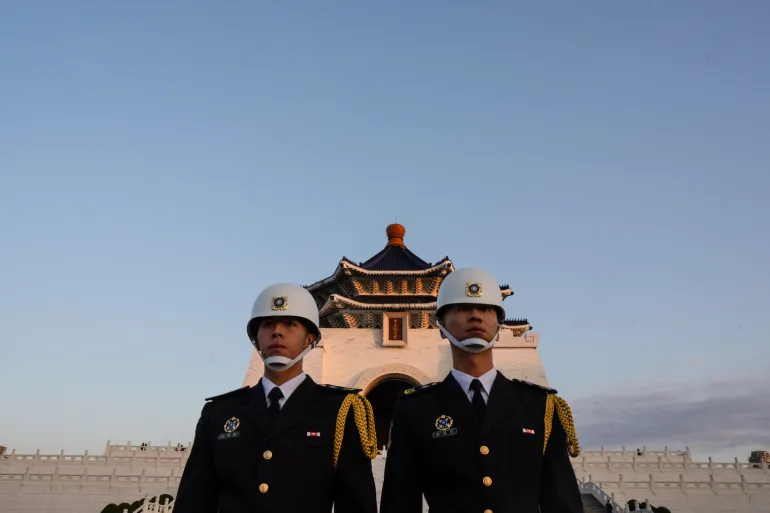A New Era for Taiwan
Taiwan stands on the brink of a significant transition as it prepares to welcome a new president. This period of change is marked by the island grappling with its complex and often divisive history. The new leader’s ability to navigate these historical intricacies will be crucial in shaping Taiwan’s future. As the world watches, Taiwan faces both challenges and opportunities that will define its path forward. Understanding this context is essential for appreciating the delicate balance the new president must maintain.
Historical Context: A Legacy of Division
Firstly, Taiwan’s history is a tapestry of division and conflict. The island’s past is marked by periods of colonization, martial law, and the ongoing struggle for international recognition. The legacy of Japanese colonial rule in the early 20th century left a lasting impact on Taiwan’s cultural and social fabric. After World War II, Taiwan was placed under the control of the Republic of China (ROC), leading to tensions with the People’s Republic of China (PRC). Which views Taiwan as a breakaway province.
Moreover, the imposition of martial law by the ROC government from 1949 to 1987 created deep-seated divisions within Taiwanese society. During this period, political dissent was suppressed, and thousands of Taiwanese were imprisoned or executed. The lifting of martial law in 1987 marked the beginning of Taiwan’s journey towards democratization. But the scars of this era still influence contemporary politics.
Additionally, Taiwan’s quest for international recognition remains a contentious issue. The PRC’s “One China” policy has led to Taiwan’s exclusion from many global organizations and has limited its formal diplomatic relationships. This ongoing struggle for recognition is a source of national pride and frustration, influencing Taiwan’s domestic and foreign policy decisions.
The New President: Challenges and Expectations of Taiwan
The incoming president faces the daunting task of addressing these historical divisions while steering Taiwan towards a prosperous future. One of the primary challenges will be balancing relations with China and maintaining Taiwan’s autonomy. This delicate dance requires diplomatic finesse, as any perceived move towards independence could provoke a strong reaction from Beijing. Potentially escalating tensions in the region.
Furthermore, the new leader must also address internal divisions within Taiwan. The island’s political landscape is polarized. With the Democratic Progressive Party (DPP) advocating for a distinct Taiwanese identity and the Kuomintang (KMT) favoring closer ties with China. Bridging this divide and fostering national unity will be crucial for the new administration’s success.
In addition, economic challenges loom large. Taiwan’s economy, heavily reliant on technology and manufacturing, faces pressures from global supply chain disruptions and competition from neighboring countries. The new president must implement policies that drive innovation, support local businesses, and ensure economic resilience in the face of global uncertainties.
Societal Impacts: Bridging Divides
Beyond the political and economic realms, the new president must also address societal divides. The legacy of martial law and the struggle for democracy have left generational and ideological gaps within Taiwanese society. Older generations who experienced martial law firsthand may have different perspectives from younger generations who have grown up in a more democratic and open Taiwan.
Moreover, the issue of national identity remains contentious. While many Taiwanese identify strongly with a distinct Taiwanese identity, others still feel a connection to the broader Chinese heritage. Navigating these identity politics will require careful and inclusive policymaking, promoting a sense of belonging for all Taiwanese, regardless of their background.
Furthermore, the new administration must tackle social issues such as income inequality, housing affordability, and healthcare access. Addressing these concerns will be essential for building a more equitable society and ensuring that all Taiwanese citizens benefit from the island’s progress. By prioritizing social welfare and inclusive policies, the new president can help heal the divisions within society.

Looking Forward: Opportunities for Unity
Despite the challenges, Taiwan’s transition to new leadership presents opportunities for unity and progress. The incoming president can leverage Taiwan’s vibrant democracy and innovative spirit to drive positive change. By fostering a sense of national pride and resilience, the new administration can unite the island in the face of external pressures and internal divisions.
Moreover, Taiwan’s strategic position in the Asia-Pacific region offers opportunities for strengthening international partnerships. By engaging with like-minded democracies and participating in regional initiatives, Taiwan can enhance its global standing and secure its place in the international community. These efforts can also bolster Taiwan’s security and economic prosperity.
Additionally, the new president can champion initiatives that promote cultural exchange and understanding. By celebrating Taiwan’s diverse heritage and fostering dialogue between different communities, the administration can build a more cohesive and inclusive society. Emphasizing shared values and common goals will be key to overcoming historical divisions and building a united future.
Navigating a Complex Legacy
Taiwan’s new president faces the formidable task of navigating a divisive history while guiding the island towards a brighter future. The challenges are significant, but so are the opportunities. By addressing historical grievances, fostering national unity, and strengthening international ties, the new administration can lay the groundwork for a prosperous and inclusive Taiwan. As the island embarks on this new chapter, the world will be watching to see how Taiwan’s leaders rise to the occasion and shape the course of their nation’s history.
Inspired by Al Jazeera News and read more articles here or read previous articles here.
